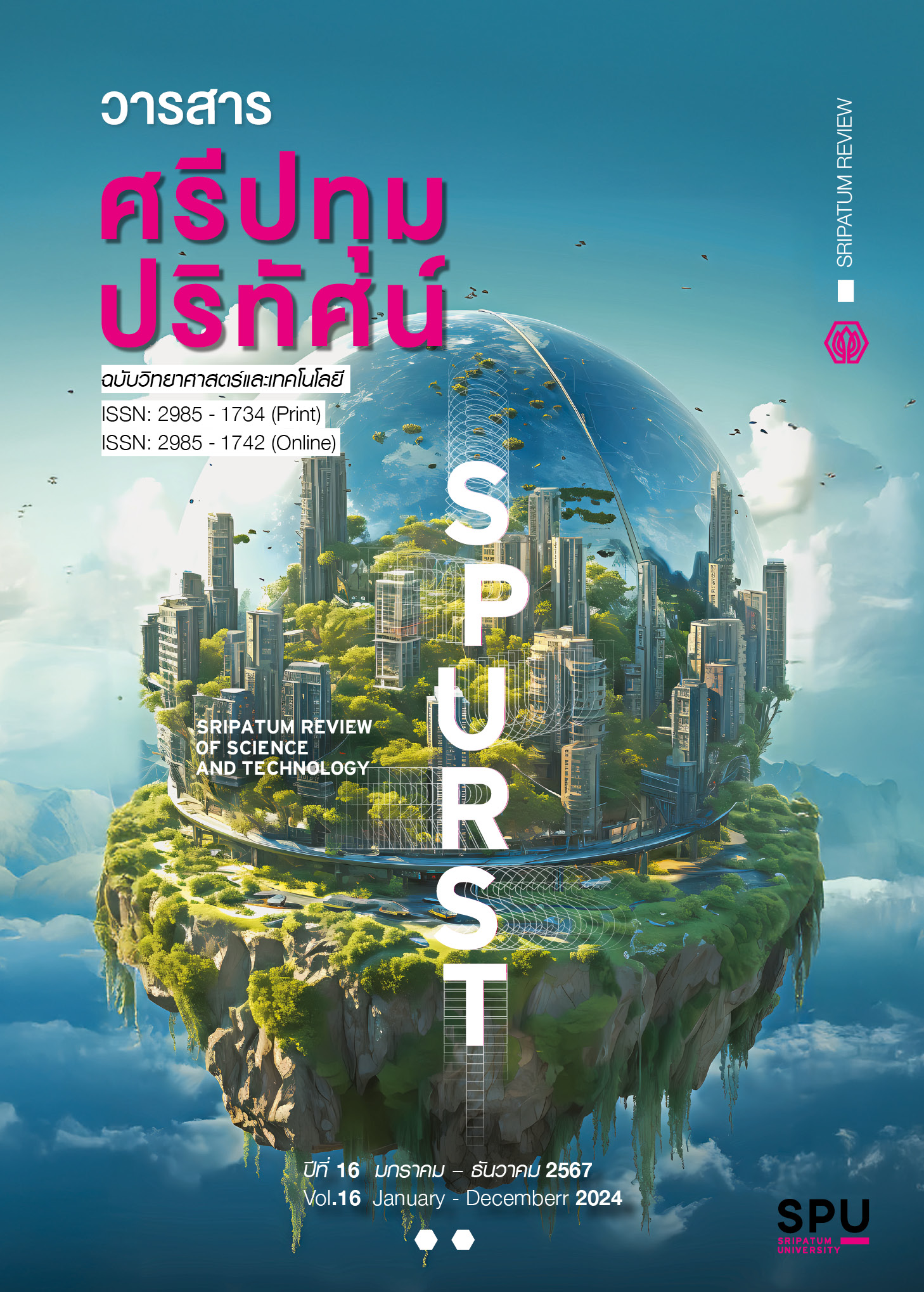Algorithmic Assessment of Water Flow Potential for Sustainable Run-of-River Hydropower Plant Development
Main Article Content
Abstract
Small-scale run-of-river hydropower plants typically exhibit a low Plant Capacity Factor (PCF) of only 14%, primarily due to variations in actual water flow rates. Meanwhile, the Ministry of Energy's renewable energy development plan emphasizes increasing electricity generation from small hydropower plants in areas with potential water resources nationwide. Therefore, developing techniques to assess hydropower potential and determine optimal installed capacity is critical. This study presents an algorithm designed to use actual flow rate data and probability distribution functions to enhance computational accuracy and address missing data issues. Additionally, the algorithm incorporates turbine operation constraints, such as the minimum flow rate required for operation, to improve reliability. The results demonstrate that the proposed algorithm effectively assesses hydropower potential in terms of both optimal installed capacity and annual electricity generation. Moreover, the study highlights the relationship between water flow rates and the continuous operation of hydropower turbines, supporting year-round efficiency. The algorithm is adaptable for real-world application in run-of-river hydropower plants, enhancing water resource utilization and aligning with national renewable energy development goals.
Article Details
References
Anagnostopoulos, J. S., & Papantonis, D. E. (2007). Optimal sizing of run-of-river small hydropower plants. Energy Conversion and Management, 48(10), 2663–2670.
Cavalcanti, D.L.O., Reis, L.F.R., (2017) Maximum Design Flow Estimates for Large Basins Using the Local Frequency Analysis (LFA) and the Most Probable Maximum Hydrograph (MPMH) Methods – a Critical Analysis. Water Resource Manage, 31, 127–141
Gernaat, D.E.H.J., Bogaart, P.W., & Vuuren, D. P. V. (2017) High-resolution assessment of global technical and economic hydropower potential. Nature Energy, 2, 821–828.
Laodee, P., Ketjoy, N., Sukjai, S., Chamsa-ard, W., & Sonsaree, S. (2013), The Community development with Pico-hydro power plantsin Thailand. Journal of Community Development Research, 5(2), 15-30.
Liucci, L., Valigi, D. & Casadei, S., (2014) A New Application of Flow Duration Curve (FDC) in Designing Run-of-River Power Plants. Water Resource Manage, 28, 881–895.
Niadas, I.A., & Mentzelopoulos, P.G., (2008) Probabilistic Flow Duration Curves for Small Hydro Plant Design and Performance Evaluation. Water Resource Manage, 22, 509–523.
Norasretpanya, P., Jittasamroeng, K., & Sintunavarat, W. (2022), Efficiency Analysis of Hydroelectric Power Plant Establishment for Medium Reservoirs: A Case Study of Lampang Province. Thai Journal of Operations Research, 10(1), 128-139.
Paish, O. (2002) Small Hydropower: technology and current status. Renewable and Sustainable Energy Reviews, 6(6), 537-556.
Phethuayluk, S. (2014), Potential of Hydroelectricity in Phatthalung Province. Burapha Science Journal, 19(2), 122-138.
Tang, S., Chen, J., Sun, P., Li, Y., Yu, P., & Chen, E. (2019) Current and future hydropower development in Southeast Asia countries (Malaysia, Indonesia, Thailand and Myanmar). Energy Policy, 129, 239-249.


